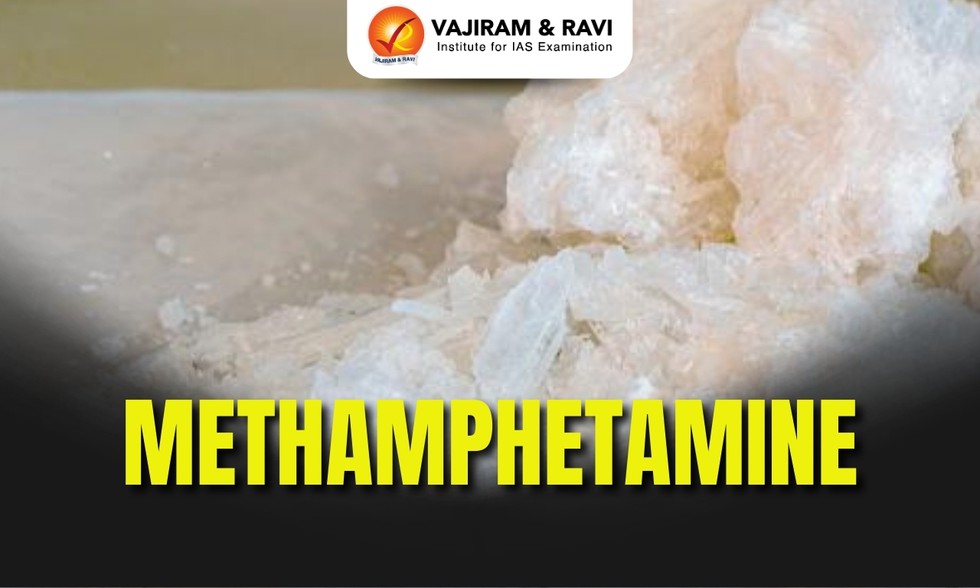About Methamphetamine:
- Methamphetamine is a powerful, highly addictive stimulant that affects the central nervous system.
- It is also known as meth, chalk, ice, and crystal.
- It was developed early in the 20th century from its parent drug, amphetamine, and was used originally in nasal decongestants and bronchial inhalers.
- Properties of Methamphetamine:
- It is a member of the class of amphetamines.
- It takes the form of a white, odorless, bitter-tasting crystalline powder that easily dissolves in water or alcohol.
- Methamphetamine is potent and easy to produce.
- It has a role as a neurotoxin, a psychotropic drug, a central nervous system stimulant, a xenobiotic and an environmental contaminant.
How does it Affect Humans?
- Like amphetamine, methamphetamine causes increased activity and talkativeness, decreased appetite, and a pleasurable sense of well-being or euphoria.
- The use of methamphetamine in higher doses can induce psychosis, bleeding in the brain, skeletal muscle breakdown, and seizures.
- It can cause violent behavior, mood swings, and psychosis such as paranoia, delirium, auditory and visual hallucination, and delusions when used chronically.
- Chronic long-term methamphetamine use can be highly addictive, and if it is discontinued abruptly, it might lead to withdrawal symptoms.
